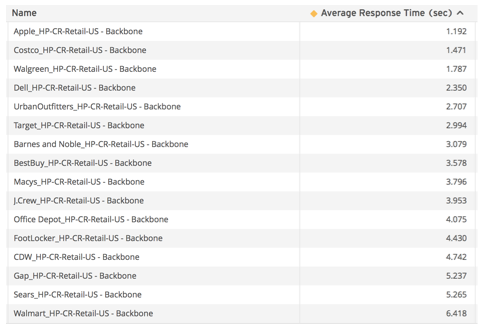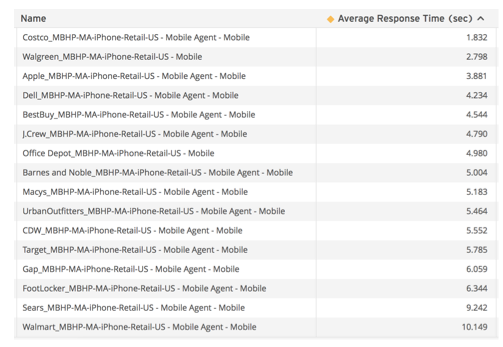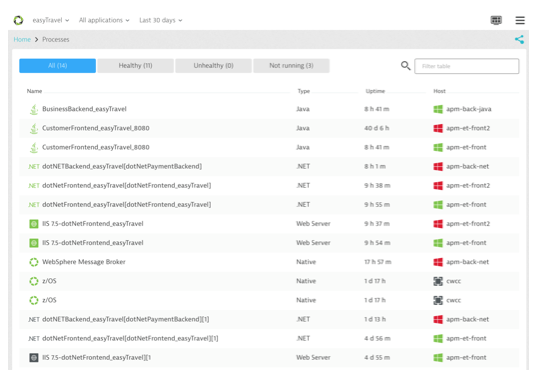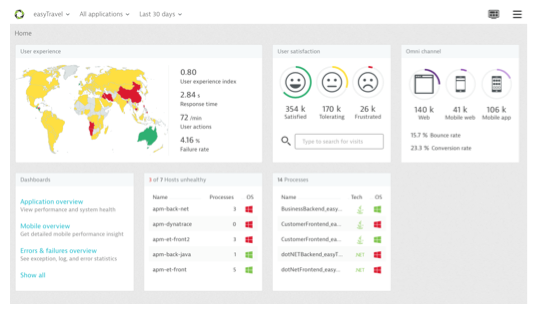By David Jones, Dynatrace

It’s that time of year again: The back-to-school season. Parents have to outfit their kids with millions of dollars in gadgets, supplies and clothes. For scores of online retailers, the “back-to-school” shopping season is a vital part of meeting their bottom-line performance. And for digital business owners and IT professionals, this translates into the need to maximize digital performance and deliver customer experiences that not only meet their expectations, but keep transactions and dollars flowing smoothly.
With this in mind, Dynatrace has looked at a selection of retailers to see how their sites have been performing through August as consumers’ forage for back-to-school deals. Dynatrace tests these retailers from end-user locations using real browsers to load specific pages or execute retail transactions. These tests not only give us an understanding as to how fast these pages can load and how successful we were loading the pages, they also allow us to understand how consistent and complex the pages are.
This analysis also uncovers important approaches and lessons for anyone concerned with digital performance. Here is a view of how some of these retailers scored through August.

While online shopping is a part of this season, what we are seeing more often is digital shopping convergence, where parents armed with mobile phones make their way to big box stores and malls looking for the latest back to school promotions. Retailers have had the digital age and smart phone-enabled shoppers thrust upon them. Some retailers have embraced digital transformation and offer their customers the ability to check stock levels and locations in specific retail locations. That is an immensely powerful capability put into the hands of consumers who can check product reviews and compare prices while they are in an actual bricks and mortar stores. For this to work the mobile experience has to be fast.
Here is a look at how these retailers’ mobile sites are performing. Dynatrace tests across real wireless connections (Verizon, AT&T, Sprint, etc.) just like consumers would be using when they are in brick-and-mortar stores.

The way in which retailers’ deliver their mobile applications and mobile web sites can have a dramatic impact on end-user experience. For example, mobile applications can be susceptible to “heavy” or complex pages. A great example of this can be seen in the chart below, where we show how Apple reduced their page weight and the impact it had on response time. Tweaking the front end of an application is definitely one way to improve performance.

Another way to improve performance is by looking at the server side of the retail site. The best way to understand how a server impacts a retail transaction is to instrument it. Instrumentation not only allows you to optimize performance on the service, it also allows you to tie real user visits to the responses and the servers, database and code that is used to respond to those requests. Below is an example of different types of tiers that can exist in a retail application. Any one of these tiers can be a performance bottleneck.

When the services above are used to respond to a consumers request for product information or retail transaction, the instrumentation can be used to understand what the consumer did, what their experience was, etc. What that means for retailers is that they can understand when performance issues occur and what the impact was on end-user experience, user satisfaction, conversion, and ultimately, revenue.

For retailers, digital convergence requires them to think of new ways to interact with their customers who may want to purchase online — but also those shoppers who will be in brick-and-mortar stores using their devices to find product reviews, coupons and competitor prices. In the future, I expect to see retailers get even more clever about offering in-store digital experiences. Think about a retailer who offers free in store Wi-Fi. If retailers control the Wi-Fi network, they can target additional promotions to pop up on web pages by passing the traffic through a proxy, or even filter searches for competitor’s products from within their W-Fi network.
The digital retail experience is no longer just in front of a desktop; it takes place on the couch, in the bedroom, in the mall and in store aisles. It is truly an omnichannel experience.
Retailers who don’t adopt an omnichannel approach to their overall digital experience strategies will find themselves with failing grades during next year’s back-to-school season.
David Jones is an APM Technical Evangelist and has been with Dynatrace for eight years. He has approximately 20 years experience working with web technologies at organizations such as S1 Corp (Atlanta), Broadvision (Bay Area), Interleaf/Texcel (Waltham), i4i (Toronto) and SoftQuad (Toronto).






